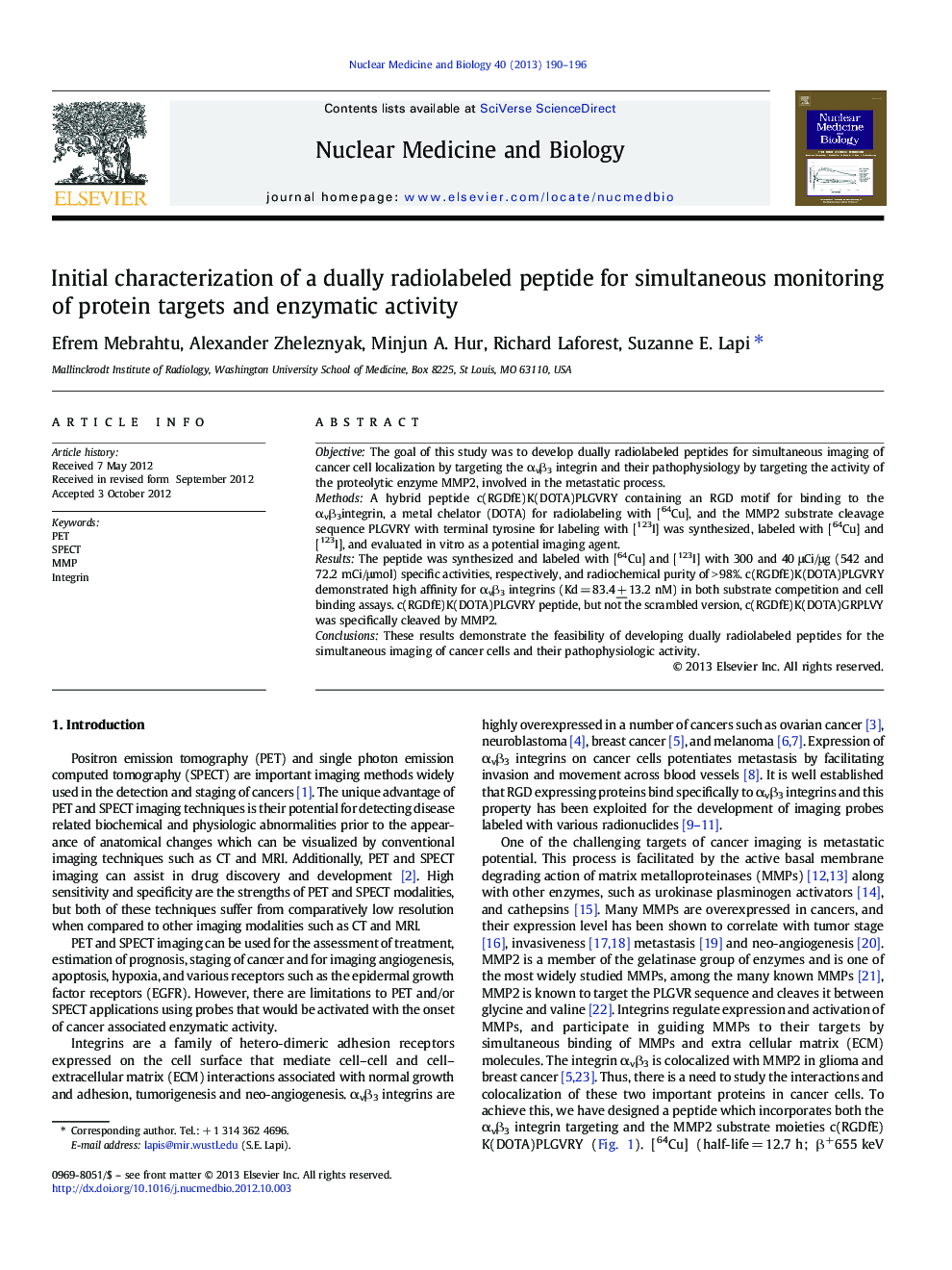| Article ID | Journal | Published Year | Pages | File Type |
|---|---|---|---|---|
| 2153692 | Nuclear Medicine and Biology | 2013 | 7 Pages |
ObjectiveThe goal of this study was to develop dually radiolabeled peptides for simultaneous imaging of cancer cell localization by targeting the αvβ3 integrin and their pathophysiology by targeting the activity of the proteolytic enzyme MMP2, involved in the metastatic process.MethodsA hybrid peptide c(RGDfE)K(DOTA)PLGVRY containing an RGD motif for binding to the αvβ3integrin, a metal chelator (DOTA) for radiolabeling with [64Cu], and the MMP2 substrate cleavage sequence PLGVRY with terminal tyrosine for labeling with [123I] was synthesized, labeled with [64Cu] and [123I], and evaluated in vitro as a potential imaging agent.ResultsThe peptide was synthesized and labeled with [64Cu] and [123I] with 300 and 40 μCi/μg (542 and 72.2 mCi/μmol) specific activities, respectively, and radiochemical purity of > 98%. c(RGDfE)K(DOTA)PLGVRY demonstrated high affinity for αvβ3 integrins (Kd = 83.4 + 13.2 nM) in both substrate competition and cell binding assays. c(RGDfE)K(DOTA)PLGVRY peptide, but not the scrambled version, c(RGDfE)K(DOTA)GRPLVY was specifically cleaved by MMP2.ConclusionsThese results demonstrate the feasibility of developing dually radiolabeled peptides for the simultaneous imaging of cancer cells and their pathophysiologic activity.
